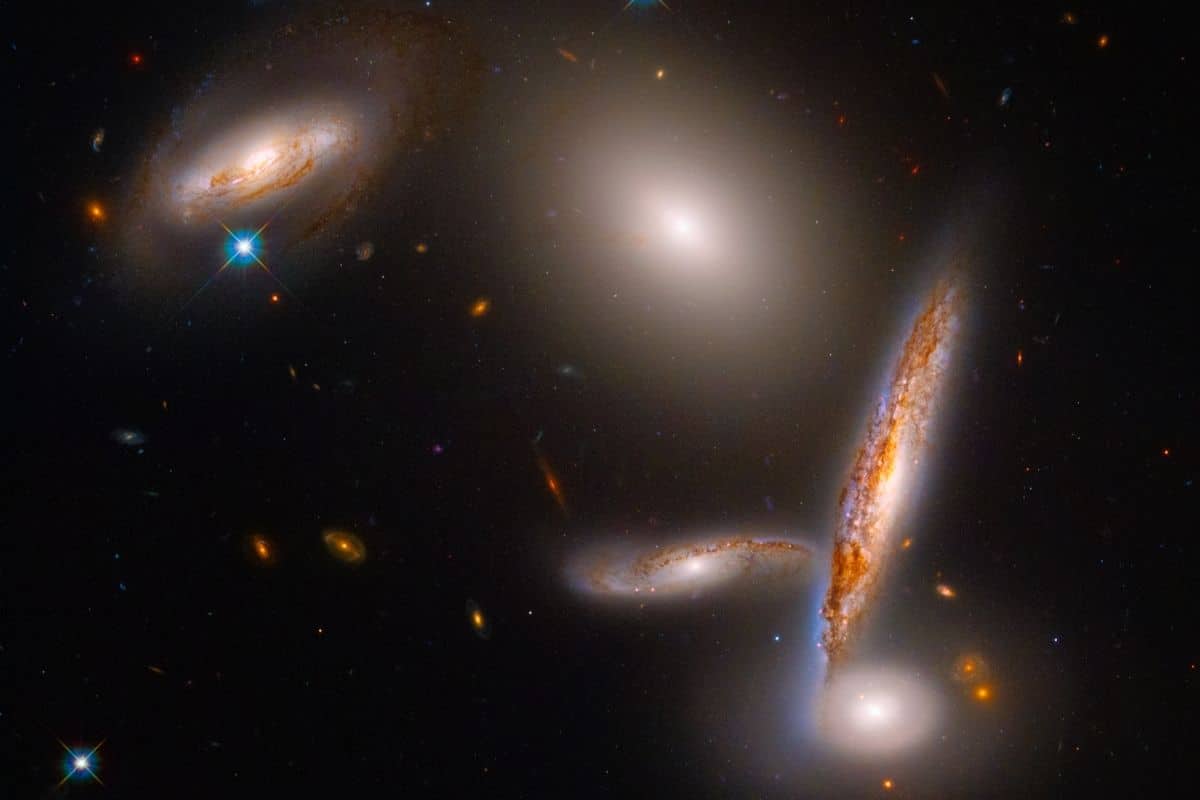

The picture shows five ‘dancing’ galaxies, doomed to step on each other’s toes soon.
Hubble Space Telescope will celebrate its 32nd birthday next week! And traditionally, the telescope treats you to a beautiful photo of its own making. This year it’s a snapshot of The Hickson Compact Group 40†
Densely populated
It is a – as the name suggests – very compact group of five galaxies. It is of course difficult to deduce from the photo how densely populated the piece of space occupied by the five galaxies is, but the entire group fits in a piece of space that is only twice the diameter of our Milky Way.
Three types
And in that small patch of space we also find a wide range of galaxies. The five-member group consists of three spiral galaxies, an elliptical galaxy and a lenticular galaxy.
no cluster
It is not uncommon in itself for galaxies to venture so close together. But we usually see such phenomena at the heart of large clusters (large groups of galaxies that are held together by their mutual gravitational pull). However, the five galaxies in the picture are not part of such a cluster; they are really only five.

Image: NASA, ESA, STScI; Image Processing: Alyssa Pagan (STScI).
dark matter
Why they cling so close to each other in the midst of that endless space is not entirely clear. Dark matter may play a role. If the galaxies are all home to some of this invisible and rather mysterious stuff, when the galaxies get fairly close together, it could have started to form one huge ‘cloud’ of dark matter, within which the galaxies move. In doing so, they would experience considerable resistance from that dark matter and therefore move more and more slowly. And then what we see happening in the photo happens: the galaxies fall towards each other.
merger
That fall won’t last indefinitely, of course: in about 1 billion years, the galaxies will actually collide and merge into a gigantic elliptical galaxy.
changeable
It makes the photo extra special; space may seem immutable, but nothing could be further from the truth. Hubble hit these five galaxies at a special time in their lives, and if the telescope could peer back at this patch of space in 1 billion years, it would see something completely different. But Hubble will of course no longer experience that – although the telescope has amply exceeded all expectations in terms of lifespan.
The telescope — originally designed to last 10 years — will celebrate its 32nd birthday next week, April 24. That is quite an achievement – also considering the many problems the telescope had to overcome in the past 32 years. It remains to be seen how many years the telescope can still attach to it. Overall, the telescope is still functioning well and it is hoped that it can remain operational until the end of this decade.
Source material:
†Celebrating Hubble’s 32nd Birthday with an Eclectic Galaxy Grouping” – NASA
Image at the top of this article: NASA, ESA, STScI; Image Processing: Alyssa Pagan (STScI)